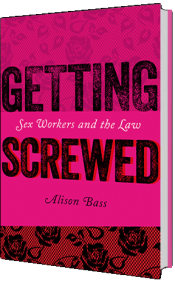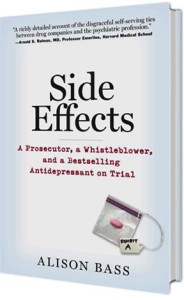A new report from the U.S. Government Accountability office confirms something that Rose Firestein, the eponymous prosecutor in the title of Side Effects: A Prosecutor, a Whistleblower and Bestselling Antidepressant on Trial noticed way back in the ’90s: that children in foster care were being over-medicated with antidepressants and atypical anti-psychotic drugs. Indeed, that’s why Firestein decided to probe the deceptive marketing of these psychoactive drugs when she went to work for the New York State Attorney General’s office in 2002.
Now, of course, comes the GAO report finding that foster children have been prescribed such psychotropic drugs at rates 2.7 to 4.5 times higher than children not in foster homes, despite the lack of evidence about their safety or effectiveness in this age group. This isn’t news to those of us who have been writing and blogging for years about how drug companies have deliberately targeted the off-label use of these drugs in children to reap blockbuster profits.
So why do these johnny-come-lately government reports matter? For two reasons: because physicians and parents in the foster care system continue to use these drugs as chemical strait-jackets, and because the pharmaceutical industry is still employing the same deceptive tactics to sell new anti-psychotic drugs for use in children and adults, as oneboringoldman demonstrates in his blogs this week. Dr. Mickey Nardo, the psychiatrist behind oneboringoldman, tells the story of how the maker of Latuda, a schizophrenia drug, paid a CRO to run a shoddy clinical trial on the drug and hire a few for-sale psychiatrists to slap their names on the study, which was then published in the American Journal of Psychiatry.
The results from this trial were then used to convince the FDA to approve Latuda for use in schizophrenia. As a result, it can now be prescribed off-label as a drug for bipolar disorder to replace anti-psychotic drugs like Seroquel, Risperdal and Zyprexa, which were found to cause severe problems in children (like diabetes and obesity) only after they were also heavily marketed off-label for this age group. In fact, as I and many others have blogged about here and here, the illegal marketing of these drugs earned the makers of these drugs record fines.
And now, according to oneboringoldman, we have a new entry in the anti-psychotic sweepstakes. All of which makes me wonder: How long before we see foster children over-medicated with Latuda?



Well done Alison
Making A Killing:
THE UNTOLD STORY OF PSYCHOTROPIC DRUGGING
http://www.cchr.org/videos/making-a-killing.html
Psychotropic drugs. It’s the story of big money—drugs that fuel a $330 billion psychiatric industry, without a single cure. The cost in human terms is even greater—these drugs now kill an estimated 42,000 people every year. And the death count keeps rising. Containing more than 175 interviews with lawyers, mental health experts, the families of victims and the survivors themselves, this riveting documentary rips the mask off psychotropic drugging and exposes a brutal but well-entrenched money-making machine.
I admire your research tremendously. I have one question from the clinical side of the foster child problem. Many foster children have neurodevelopmental problems (e.g. fetal alcohol disorders) that are poorly understood and difficult to treat. There is very little science to guide clinicians and foster parents. A chemical straitjacket is sometimes preferable to the alternatives, which may include various forms of incarceration. I suspect that this population may be overrepresented in the foster care samples, in some cases not even diagnosed. For someone who treats these children, this clouds the real issue of overmedication.